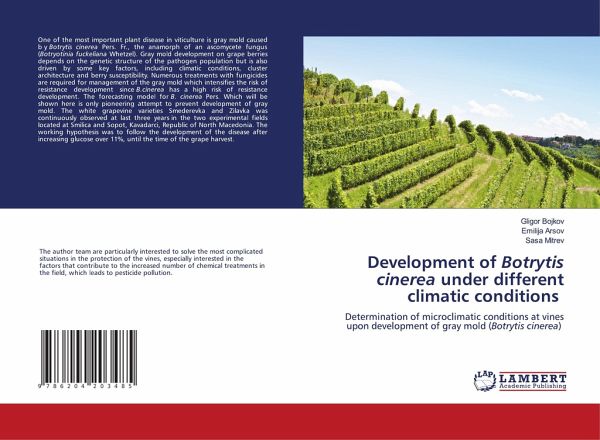
Development of Botrytis cinerea under different climatic conditions
Determination of microclimatic conditions at vines upon development of gray mold (Botrytis cinerea)
Versandkostenfrei!
Versandfertig in 6-10 Tagen
18,99 €
inkl. MwSt.

PAYBACK Punkte
9 °P sammeln!
One of the most important plant disease in viticulture is gray mold caused by Botrytis cinerea Pers. Fr., the anamorph of an ascomycete fungus (Botryotinia fuckeliana Whetzel). Gray mold development on grape berries depends on the genetic structure of the pathogen population but is also driven by some key factors, including climatic conditions, cluster architecture and berry susceptibility. Numerous treatments with fungicides are required for management of the gray mold which intensifies the risk of resistance development since B.cinerea has a high risk of resistance development. The forecasti...
One of the most important plant disease in viticulture is gray mold caused by Botrytis cinerea Pers. Fr., the anamorph of an ascomycete fungus (Botryotinia fuckeliana Whetzel). Gray mold development on grape berries depends on the genetic structure of the pathogen population but is also driven by some key factors, including climatic conditions, cluster architecture and berry susceptibility. Numerous treatments with fungicides are required for management of the gray mold which intensifies the risk of resistance development since B.cinerea has a high risk of resistance development. The forecasting model for B. cinerea Pers. Which will be shown here is only pioneering attempt to prevent development of gray mold. The white grapevine varieties Smederevka and Zilavka was continuously observed at last three years in the two experimental fields located at Smilica and Sopot, Kavadarci, Republic of North Macedonia. The working hypothesis was to follow the development of the disease after increasing glucose over 11%, until the time of the grape harvest.












